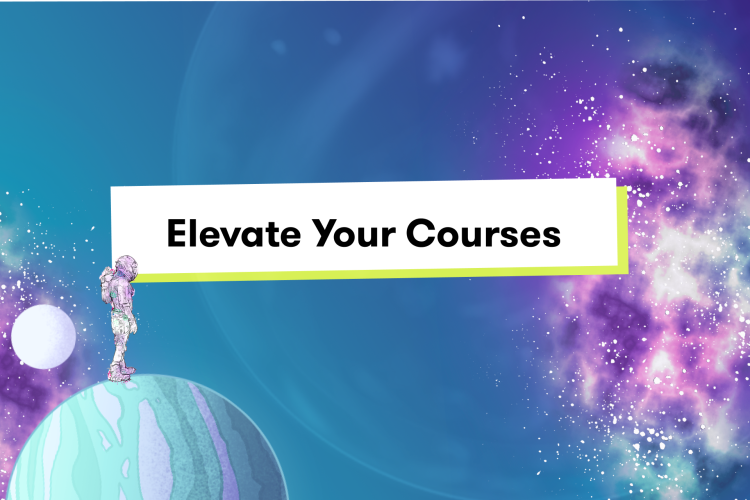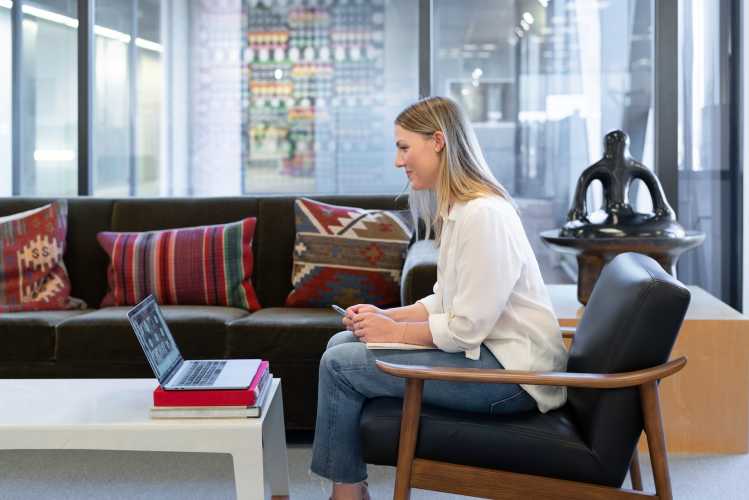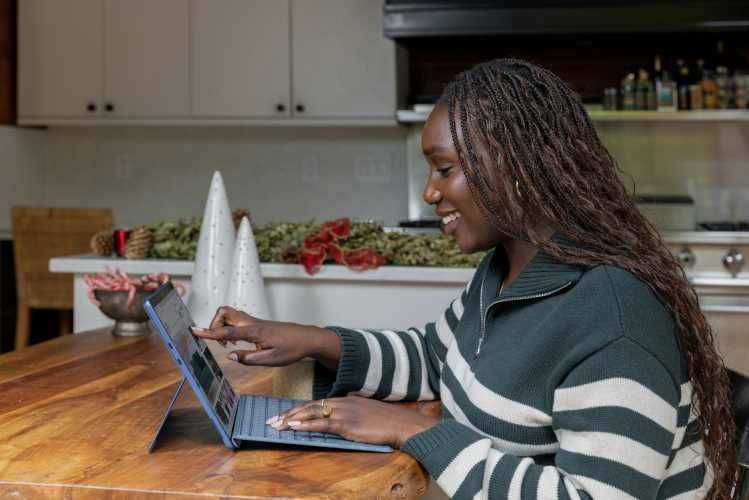Online Courses
11 Secrets of Effective Online Course Design (2025)
If you're ready to master online course design, try these tips on for size.
Author
Last Updated
October 15, 2025

Table of Contents
- 1. Add a community
- 2. Know your learning outcomes
- 3. Know when to avoid learning outcomes
- 4. Have your students create real stuff
- 5. Define your Ideal Student
- 6. Create a Big Purpose Statement
- 7. Try a cohort course
- 8. Let your audience dictate format
- 9. Mix mediums
- 10. Leave some open space
- 11. Choose your platform
- Ready to start?
In this article
- 1. Add a community
- 2. Know your learning outcomes
- 3. Know when to avoid learning outcomes
- 4. Have your students create real stuff
- 5. Define your Ideal Student
- 6. Create a Big Purpose Statement
- 7. Try a cohort course
- 8. Let your audience dictate format
- 9. Mix mediums
- 10. Leave some open space
- 11. Choose your platform
- Ready to start?
If you’re just coming to online course design, it can be a bit intimidating. Maybe you’re faced with an evolving marketplace and need to figure out new ways to do business. Maybe you’re a first-time course creator who’s never done this, but has something to share with the world. You’ve no doubt read stories or stumbled across gurus promising 6-figure launches or sales templates you can copy. And while those resources might be helpful, you’re probably just wondering – “How can I make a course people will love, pay for, and tell their friends about?”
That’s the crux. And that’s what we’re going to talk about. At Mighty, we’ve got thousands of successful communities. And for many Hosts, courses are a vital part of their business. So, in this article we’ll share some of the secrets we’ve learned for effective online course design.
If you want more support in building your online community, come join OUR Mighty Community for free and meet other new and established community owners! We’d love to meet you. Join for free!
1. Add a community
Ryder Carroll had struggled with ADD for his whole life. When he was growing up, he couldn’t find a lot of resources to help him organize his thoughts. So, over time, he developed his own method – he called it bullet journaling. Today, Ryder runs BuJo U, and it does have a bullet journaling course in it where he teaches new journalers to master the style.
But the course isn’t just stand-alone. Ryder embedded the course in a vibrant community of 750 members who are all helping each other, building friendships, and growing in their skills.
The thing is, Ryder’s story isn’t unique. We’re finding that SO MANY people love courses THAT ARE EMBEDDED IN COMMUNITY! A community adds more than just people to talk to. Communities built around courses make their members way more likely to succeed at learning their new thing.
Why?
Well, to answer this, let’s look at the challenges with a traditional, pre-recorded (asynchronous) online course:
No accountability, so people quit.
Nobody to answer questions if you get stuck.
No opportunity to go deeper into the material.
It’s lonely. You sit by your lonesome in front of a screen and try to learn.
It’s not engaging. The instructor talks AT you, not with you.
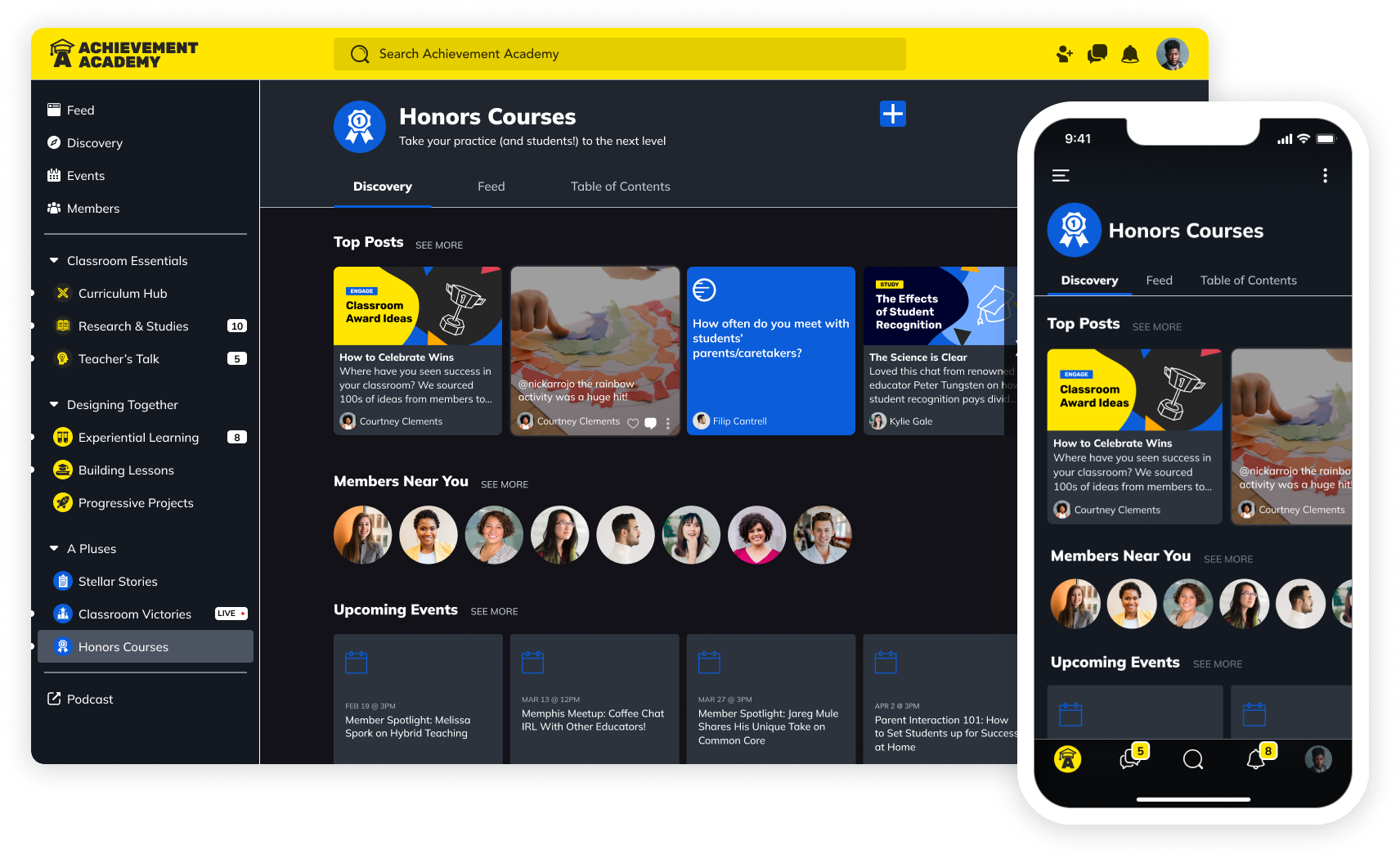
But what happens when you add an online community to a course? All of a sudden, these problems are addressed. Without changing the course itself, adding a community makes it more likely people will show up, do the work, and see the transformation. The community gives them other ways to get motivation, questions answered, and to find friends.
If you want to add a community to your course, try our community name generator! Mighty Co-Host™ runs on Chat GPT and can create a Big Purpose, community name, brand, landing and sales pages, and more. Mighty brings an AI community generator together with either live or pre-recorded courses. Try it below!
Try Our Community Name Generator
Our AI engine is here to help you create a community name that feels like magic. Just share a few words about who your community is for and we’ll get to work.
Examples: coaching clients, meditation novices, vegan chefs, dog lovers, aspiring entrepreneurs, etc.
The names generated by Mighty Co-Host™ are examples only and may be used by other businesses or subject to third-party rights. For more information, check our Terms
2. Know your learning outcomes
Do you remember when you got a report card as a kid, it would often have learning outcomes on it? It would say things like:
Works Independently
Can Focus on Tasks
Finishes Work in the Time Allotted
These are called learning outcomes. And then, in traditional school, we’d add in a letter grade so the teacher could tell little Jimmy’s parents where Jimmy stood in relation to other students.
The thing is, good online course design needs learning outcomes too. But learning outcomes don’t need to be like the ones on your report card.
For starters, this might be because you’re creating practical learning outcomes. In traditional education, the outcomes were aligned with standardized assessments. So, you were tested for knowledge acquisition (e.g. Can little Jimmy name all 50 states?).
The cool thing about online courses is that MANY of them are directed toward practical learning outcomes. If you take a Facebook ads course called “Bring 5,000 visitors a day to your webpage,” you know what the outcome is… You want 5,000 visitors a day on your website! You’re not looking to be quizzed on Facebook’s algorithm or advertising theory. You just want a path to follow to make it work.
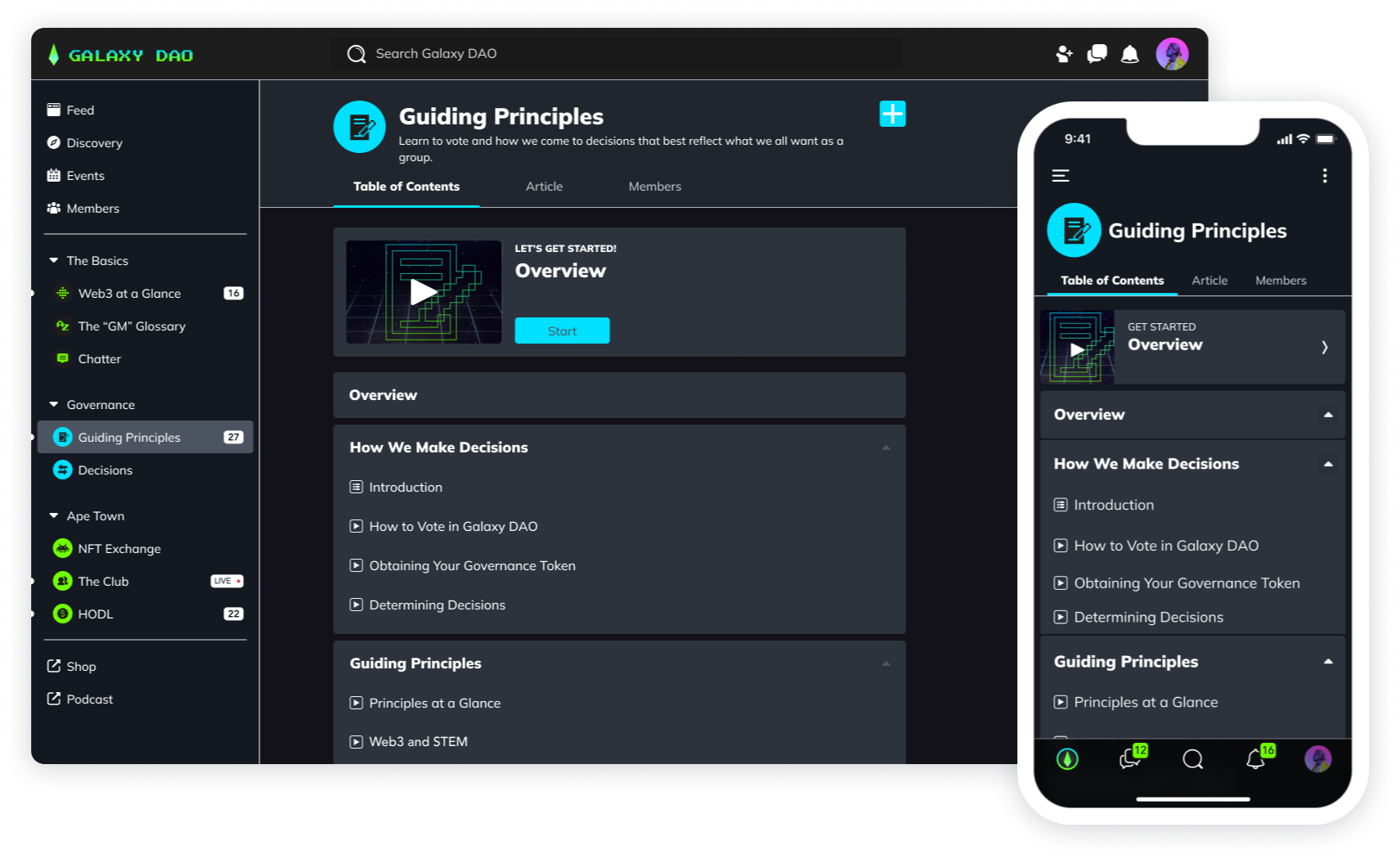
Your students want something. Many courses offer some sort of transformation, or the ability to put something into practice and see results. In most cases, the learning outcomes for a course should be tied to what students need to see results.
3. Know when to avoid learning outcomes
Then, there’s another type of course altogether. There’s a course that has no business having clear learning outcomes.
Let’s imagine a course that’s going to help you be more mindful and in touch with your feelings.
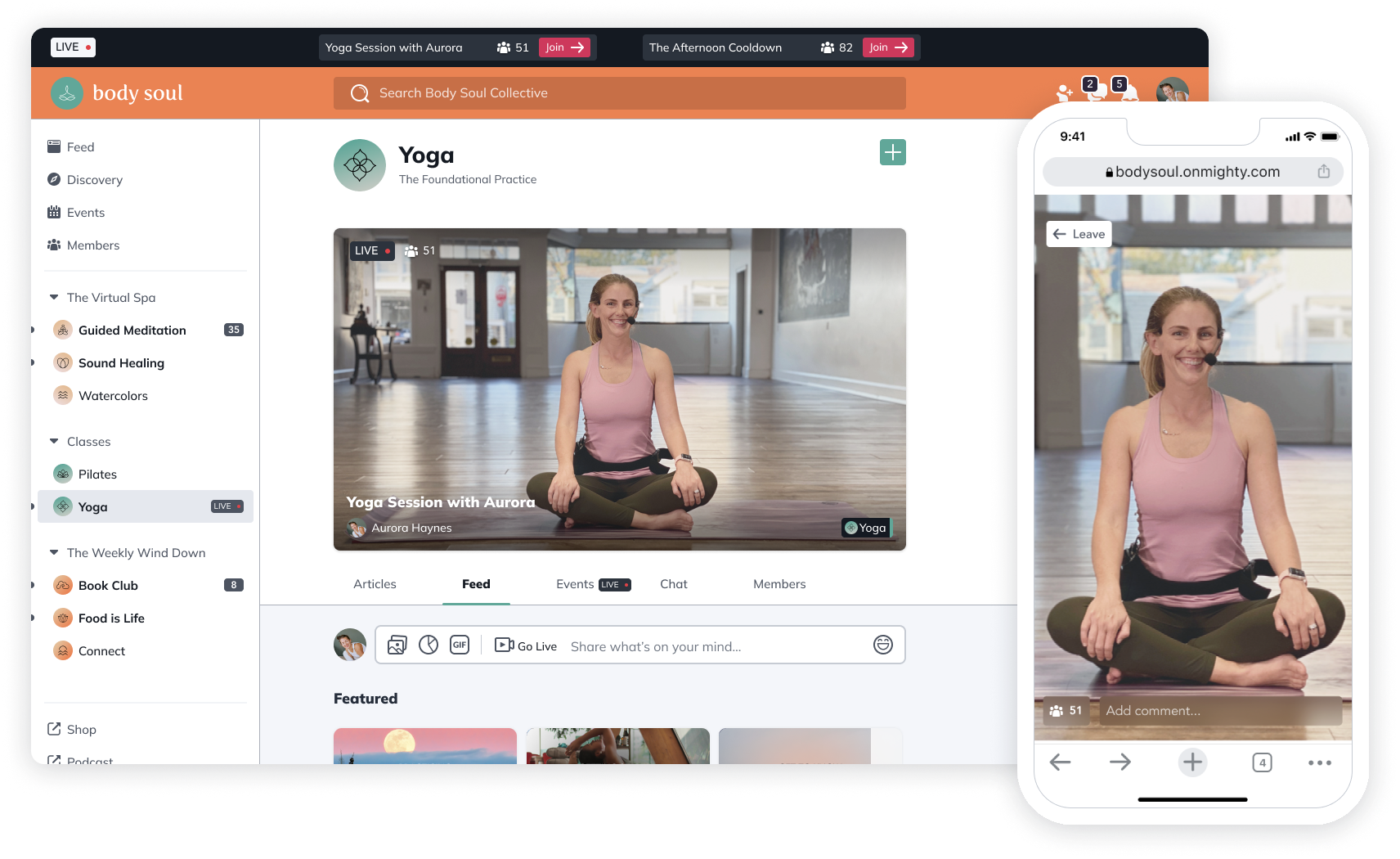
At the end of the course, you’re not looking for a concrete checklist that says things like The student meditates 5 times a day. You’re really looking for a feeling. A sense that you’re further along on a journey that ultimately has no end. And that can be subjective.
With some types of learning, you as the teacher will need to share what you know and hope it’s enough. And not everyone will have the same reaction to it.
4. Have your students create real stuff
Okay, not to keep knocking on traditional schooling here. But in traditional schools, you usually created artificial projects.
The beauty of an online course is that you can create real stuff. So, if the course were called Creating an Effective Artist’s Portfolio, the best way to teach it is probably just to walk your students through the process of doing it. You can learn by doing. Or, as the experts call it, you can use experiential learning.
5. Define your Ideal Student
The thing that stinks about traditional schooling is that you get a bit of everything in a class. There might be a few great students who are excited to be there. But there are going to be a bunch who don’t really care, and a handful who are sticking gum under their desk and throwing spitballs when you’re not looking. (Not that you’d ever do that, right?)
When you’re designing an online course, you’re really working in a much different (and more positive) space. Nobody’s going to be forced to sit through your course. They’ll only do it if they want to!
And that’s really cool!
So lean into this, and make sure you cram your virtual classroom with students who want to be there. The secret to this is having an Ideal Student. An Ideal Student is a specific, focused person who your course is designed for.
You can ask questions to find your Ideal Student:
Where do they come from?
What do they struggle with?
What demographic do they belong to?
What are their hopes and dreams?
We’ve found over time that one of the best ways to find Ideal Students is to go and interview people! Why try to guess what people want when you can ask them? And often, the people you interview can become some of your first students – after all, if you’re building a course around their needs, they’ll probably be interested.
6. Create a Big Purpose Statement
So after all that talk about learning outcomes, we’ve got a really neat way to bring together your learning outcomes and your Ideal Student together. It’s part of our process we call Community Design™.
The answer is… a Big Purpose Statement. A Big Purpose Statement defines who your course and/or community is for, and what they’ll get from it. It looks like this:
Try it for your course!
7. Try a cohort course
If you’re designing an online course, here’s another secret. Think about a cohort course. A cohort course is one that’s taught live. Teaching an online course cohort style changes the dynamic of the course entirely.
Take Doug Neill’s story. Like Ryder, Doug had a visual organizational strategy that people loved. He’s a master with visual note-taking, a craft he calls sketch noting. And he realized that people wanted to learn the craft.
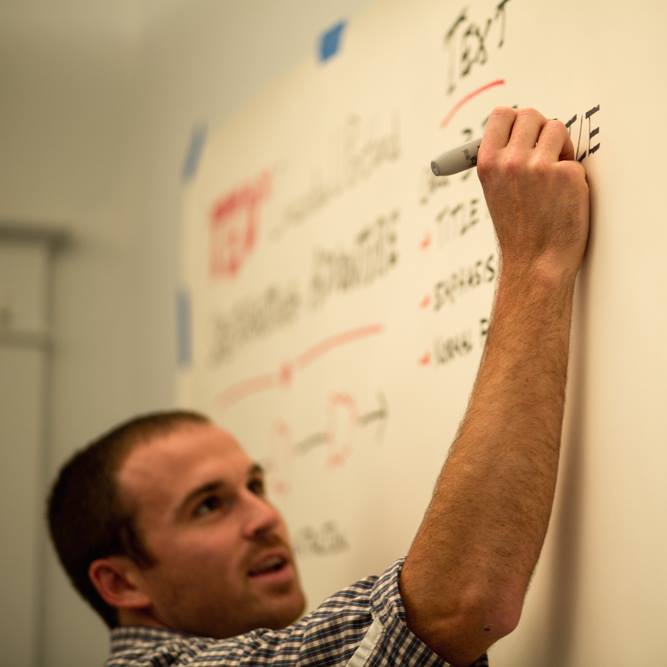
He started by building some courses but struggled to get traction. Like Ryder he discovered the secret of community, immersing his audience in a platform that let them build relationships while they took the course. He moved his courses to an online community he calls Verbal to Visual.
But Doug is trying something else now. After five pre-recorded courses, he decided to launch his newest course in front of a live audience! Doing live teaching, whether in the form of a course, webinar, or Q&A, brings his audience together and lets them take the discussion where they need it to go.
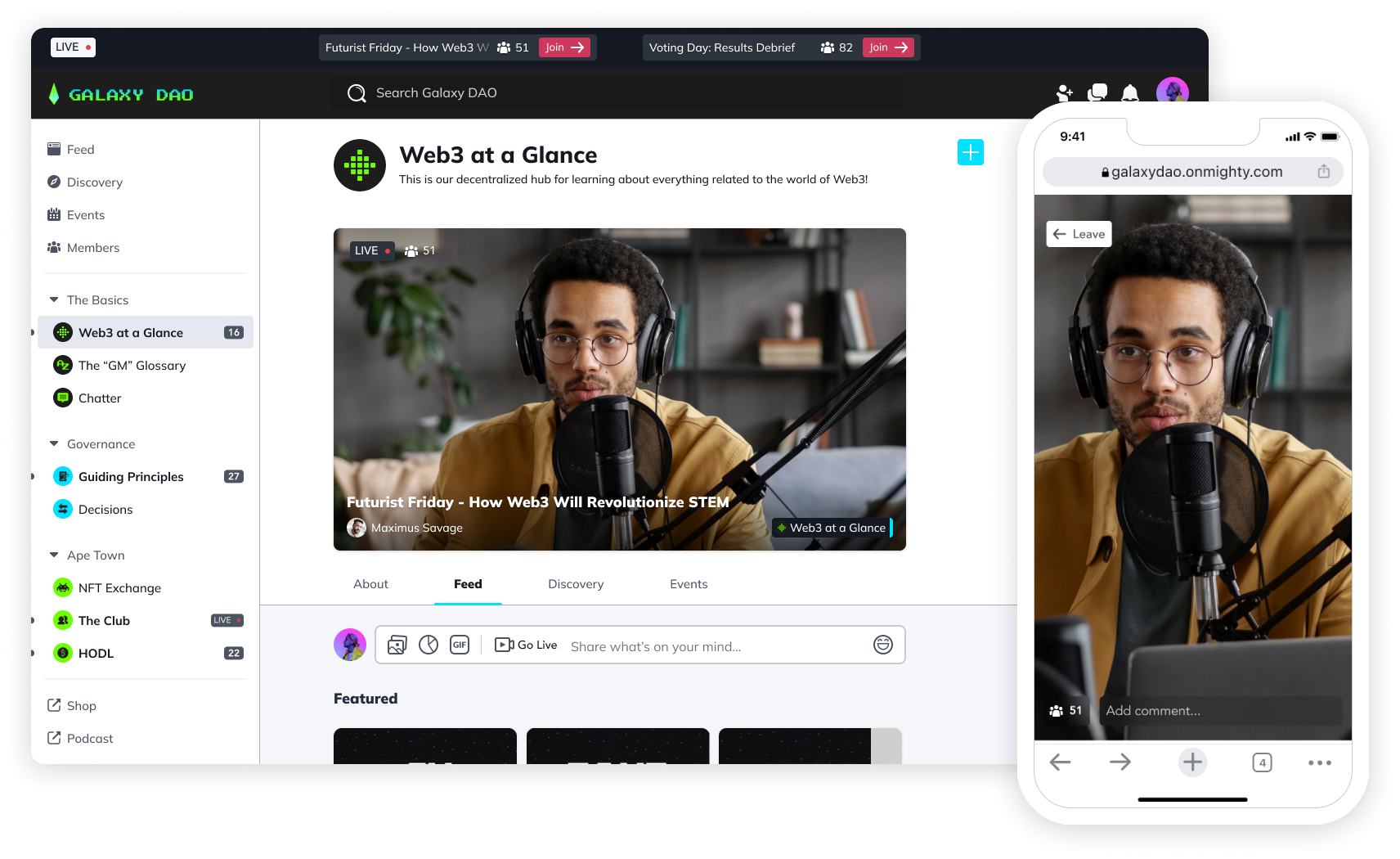
In fact, that’s what a cohort course does that’s unique. When you pre-record a course, you’re giving the audience what you think they need. When you teach live, you’re opening your course up to the magic that can come from an unexpected question or comment.
Here are some of the benefits of a cohort course:
You can presell the course. If nobody buys it, maybe do some adjusting and then try again! There’s no better market research than upfront payments.
You can adjust to what audience members need as you go. Let questions and comments lead you. It will make the course better.
It fits the way some people like to learn.
8. Let your audience dictate format
If you’re in a toss-up between whether to teach a live or pre-recorded course (AKA synchronous vs. asynchronous), forget about what the trends or the gurus say. Of course, we do love cohort courses at Mighty. But ultimately, a pre-recorded course with a community attached to it can be pretty special too.
The point is, you can let the needs of your audience dictate exactly which one is right. For example, do you have an audience of busy moms? You know, the ones life’s going to throw curveballs at right as they try to show up for your live course? Maybe they need a pre-recorded course. Are you doing some intensive, hands-on work that could REALLY benefit from live feedback as it’s happening? Maybe you should be looking at a live course.
You can use the handy chart below to choose the right one for you. And by the way – we should probably mention – you don’t need to choose. You can do both! Mighty lets you teach a live course and add the recording to your LMS, so there’s something for everyone.
If Yes... | If No... | |
|---|---|---|
Are your students self-directed and autonomous? | Try Asynchronous | Try Synchronous |
Does your material ever change? | Try Synchronous | Try Asynchronous |
Do students require live feedback and support? | Try Synchronous | Try Asynchronous |
Do your students have limitations in joining through a live session, either because of learning style or lifestyle? | Try Asynchronous | Try Synchronous |
Will the students need to workshop ideas, have discussions, or work together? | Try Asynchronous | Try Synchronous |
9. Mix mediums
Some people like to read. Some like to watch. Some like to listen. When designing an online course, you don’t need to choose one of these things. If you prefer to teach on camera, you could generate an AI. transcription of your words and edit them into a readable lesson (or write a separate lesson). If you’re a writer, can you add images or short videos to illustrate longer, written lessons?
Mixing your mediums can help students with different learning preferences and reinforce the material. But, maybe even more importantly, it can also make the course more accessible for learners with a disability who may not be able to use each format.
10. Leave some open space
We’ve talked a lot in this post about the value of live interactions. Adding community chat, discussion, and live streaming to a traditional asynchronous course. Using cohort-courses to teach live. Adding in Q&A times or “office hours” when students can get extra help.
These all represent a principle in online course design that you can steal. Leave enough space in everything you do to let your students connect, ask questions, and define what they need from the course. These interactions and relationships are an important part of their learning journey too.
11. Choose your platform
Last, but definitely not least, effective online course design requires a good platform. This might seem strange, but it shouldn’t. Most things we’ve talked about above require a great tech stack to get done. After all, if you’re teaching a live course, adding in a vibrant community, and mixing mediums in terms of content delivery, you’re going to need a platform that can do all that.
The answer is a versatile online course platform.
You need something that will let you create the course you want, with a bunch of features. But don’t forget, if you’re selling your course, you probably also need a platform that can handle monetization, selling, and gating access.
There are traditionally two types of online course platforms. One is a marketplace platform like Skillshare or Udemy. These platforms allow you to put your course alongside thousands of others. And marketplace platforms have certain advantages. Your course is being listed for an existing audience – often of millions. People are going to show up, and if you play your cards right, they might find your course.
The downside to a marketplace platform is that you have a lot of competition – your course needs to get seen in the crowd. It’s almost impossible to add in a community or live instruction – you need to follow their strict formats. PLUS, the monetization model of a lot of these platforms doesn’t always pay fairly. For Skillshare you get pennies per watch time, meaning you won’t make much unless you have a LOT of views. With Udemy, they take 50% of your revenue from people who find your course on their platform.
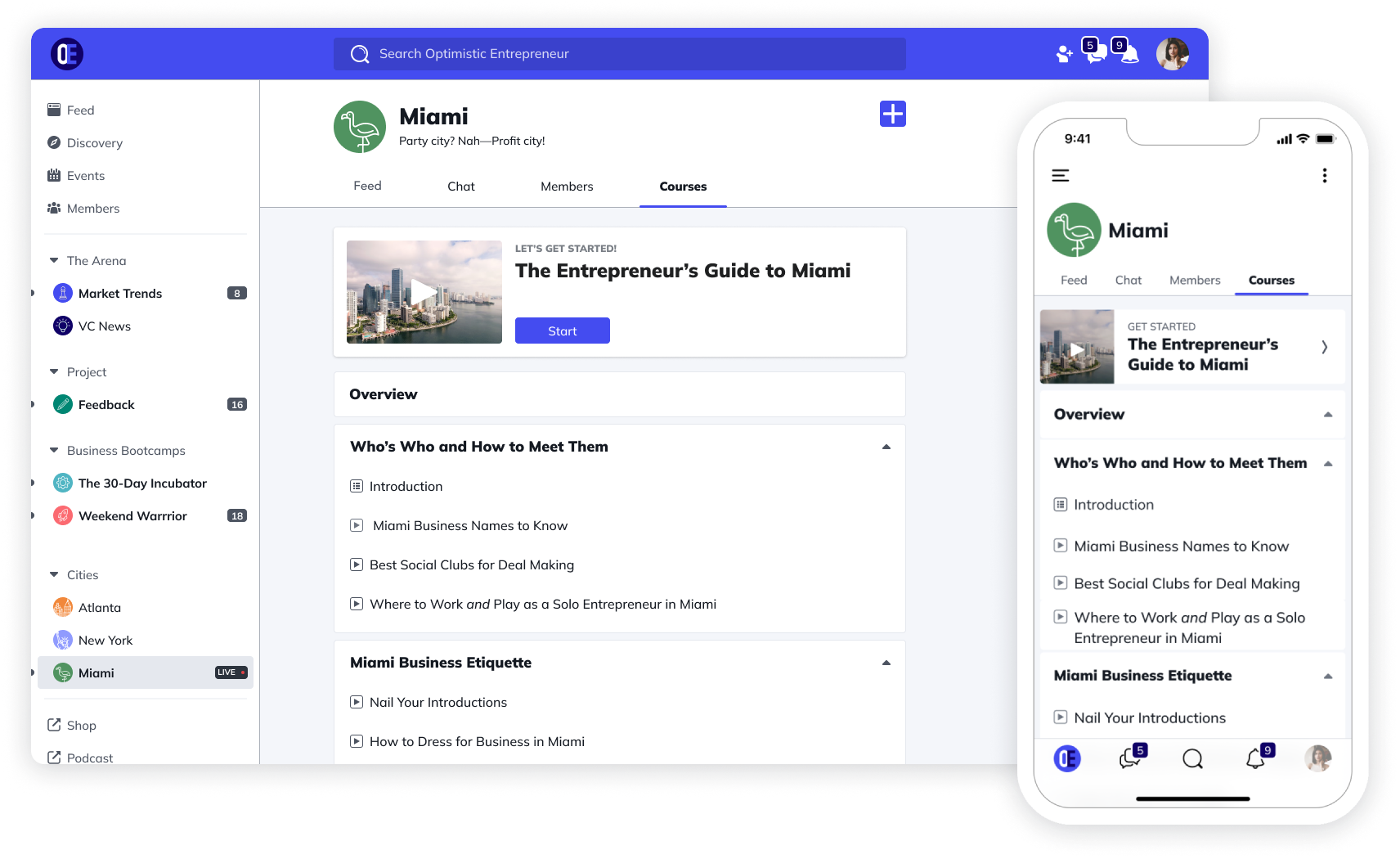
The other type of platform is a dedicated space that you own. This gives you a customizable course-builder you can host under your brand, creating the course you want. The downside to this is that you’ll need to find your students yourself. But the upside is huge, since you get to keep 100% of your revenue and create a course that truly reflects your style and your students’ needs.
Ready to start?
If you’re ready to get started with courses, come give Mighty a try! Our unique cultural software platform lets you do all the things we talked about above, bringing together courses, community, content, and commerce.
And Mighty’s flexible Spaces mix in live events, live streaming, discussion forums, messaging and chat, polls and questions, and pretty much any type of content you can imagine. PLUS, your Ideal Students can access your course via a fantastic app for all devices, and you can sell access in 135 currencies or even with token-gating.
Ready to start designing your online course?
Ready to start building your community?
Start a free 14-day trial to explore Mighty—no credit card required.
More like this
Join Mighty Community
Learn the principles of Community Design™ (and see them in action) alongside thousands of creators and entrepreneurs. It's free to join!

Online Courses
Creating a Course
Teaching a Course
Course Platforms
Selling a Course
Communities & Memberships
Community Platforms
Managing a Community
Building a Community
Growing a Community
Monetizing a Community
Content Creation
Creators & Entrepreneurs
Monetization
Content Creation
Starting a Business
Website Builders
Creating & Managing a Website
Events
Event Platforms
Hosting & Marketing Events
Branded Apps
Creating a Mobile App
Coaching Apps
Community Apps
Coaching
Mastermind Groups
Starting a Coaching Business
Coaching Platforms
Filter by Category
Online Courses
Communities & Memberships
Creators & Entrepreneurs
Events
Branded Apps
Coaching
Build a $1 Million Community
This free masterclass went viral—sign up to learn why.














